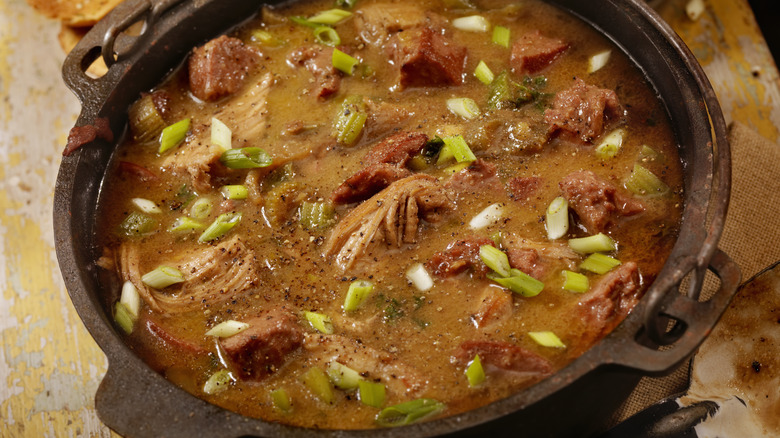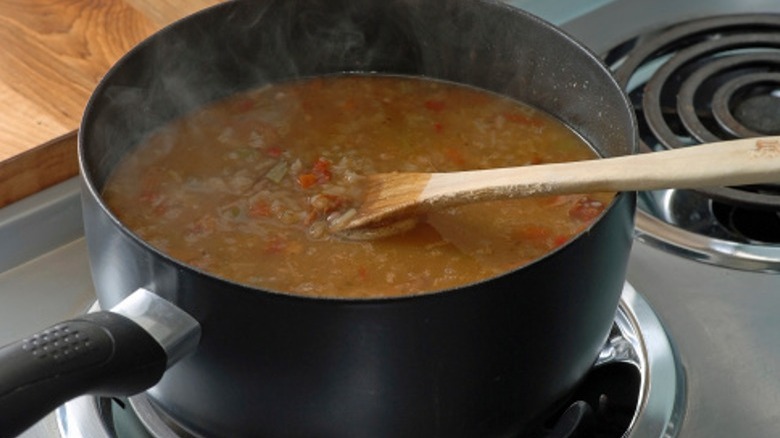The Type Of Pot For Making Gumbo Matters. Here's The Best One
Gumbo, a soupy stew native to Louisiana, is a staple of both Cajun and Creole cooking. It has this in common with jambalaya, but what differentiates the two is the fact that gumbo is thickened with roux. This ingredient is one of the factors that influence what kind of pot you use and yes, it's important to choose the right pot if you can. For advice on selecting the best gumbo-cooking vessel, we went straight to a New Orleans restaurateur, Edgar "Dook" Chase IV. His Crescent City eatery, Dooky Chase, is a family-run establishment, and Chase is the third to take the reigns as executive chef. Having established the man's food world cred, let's move on to his pot pick: He suggests that gumbo is one of those foods that can be cooked in a Dutch oven.
Chase tells Mashed, "If you have a Dutch oven, certainly" it can (and should) be used for making gumbo. He also says that a cast iron Dutch oven will work, however, he does have one caveat, and this applies to the roux-making stage. As he cautions, cast iron holds heat and he explains that this means the roux will keep cooking even after you switch off the stove burner. For this reason, if you're making gumbo in a cast iron Dutch oven, he advises, "Pull it off that fire before it gets to the color that you want or it's going to keep continuing on."
There are other options for cooking gumbo
Depending on how large a batch of gumbo you plan to cook (it freezes well for meal prep purposes, after all), you may find that your Dutch oven is not sufficiently sizable to hold the whole thing. There's no need to rush out and buy another pricey pot, though, especially since there are plenty of cooks who make gumbo in a different type of vessel. One that's often seen as a classic for gumbo-making purposes is an oval-shaped roasting pan which is made of aluminum and manufactured by a brand called Magnalite. In fact, Leah Chase, grandmother of Edgar "Dook" Chase IV, used such a pan at her restaurant, and it's now on display in the Smithsonian. Other recipes, however, call for gumbo to be made in a stock pot and these may even be labeled and sold as gumbo pots.
If your stock pot is thin on the bottom and you're concerned that the roux might burn, there are a few ways around this. One is to start the roux in a cast iron or other heavy frying pan, then add it to the pot once you've stirred in some of the stock. If you find that your gumbo sticks to the bottom of the pan even at the post-roux stage, though, you can compensate for a thin-bottomed (even a saucepan for smaller batches) pan by using a heat-diffuser that will eliminate hot spots and also help serve as a second bottom, of sorts.

